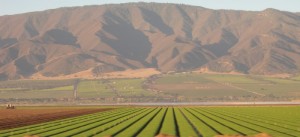For the third year, the California Department of Conservation (DOC) has announced that funding will be available for projects that protect agricultural land and reduce greenhouse gases.
Cities, counties, and land trusts are invited to apply for grants that will help California reduce greenhouse gas emissions, strengthen the economy, and improve public health and the environment. Grants are made available through California’s Sustainable Agricultural Lands Conservation Program (SALC) and are funded through a portion of cap-and-trade auction proceeds dedicated to greenhouse gas reduction.
The amount available has yet to be determined, but totaled more than $37 million last year. While complete applications are due August 1, the DOC encourages submission of pre-proposals by June 1, so that the department can help guide applicants through the process.
Launched by the Strategic Growth Council (SGC) in 2015, the SALC Program dedicated $4.6 million to agricultural conservation easements and planning grants in its first year. In 2016, it awarded $37.4 million in grants to preserve 20 properties, protecting 19,000 acres of agricultural land. The Department of Conservation’s Division of Land Resource Protection (DLRP) administers the program on behalf of the SGC, and contributes expertise to the SALC Program by developing the guidelines.
The SALC Program is part of the California Climate Investments Initiative, a statewide program that puts billions of cap-and-trade dollars to work reducing greenhouse gas emissions, strengthening the economy and improving public health and the environment—particularly in disadvantaged communities. The cap-and-trade program also creates a financial incentive for industries to invest in clean technologies and develop innovative ways to reduce pollution. California Climate Investment projects include affordable housing, renewable energy, public transportation, zero-emission vehicles, environmental restoration, more sustainable agriculture, recycling and much more. At least 35 percent of these investments are made in disadvantaged and low-income communities. For more information, visit California Climate Investments.



